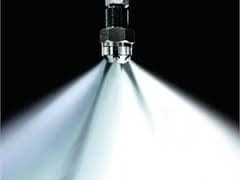We are almost there. Tomorrow is the last sea day before we arrive at Nassau. Although the guests are very happy, I start to sense a little restlessness of everybody wanting to run off the ship. My experience is that 5 days are about the limit that people can do before uneasiness sets in. The longest stint at sea I have done without calling somewhere was on the old Nieuw Amsterdam when we sailed empty from Hilo in Hawaii to Sydney Australia for the Olympic Games. 12 days at sea. The whole crew loved the idea but after day 6 all the work was done, there were only so many parties we could throw and a certain weariness set in. We have not reached that state of weariness here on board, the guests are kept too well entertained for that but still it is a long period. To serve the cruise business properly there should be an island on the crossing about every three days or so. Maybe something for Carnival Corp. to think about. They are building docks everywhere to create new destinations so why not a new island. Talk to the Dutch dredging companies and in no time we would have a 2nd Azores somewhere.
But that is not the case and thus we have a nice and long crossing. At least the weather is helping with following winds today. There was about 22 knots from the South East and as we are doing just over 15 knots at the moment, it meant that we had a very nice and gentle breeze of relative wind blowing over the decks. Perfect sea day.
My day was split in two parts today. This morning I gave training to the whole kitchen staff of how to respond to fire and other calamities and this afternoon it was time for my HAL History Lecture in the show lounge. With the latter, I guess, there were about 500 guests in the lounge and with most of them spreading out comfortably meant that I had a full house. Hopefully they enjoyed my 90 minutes of talking about DAM ships.
The audience in the kitchen was much smaller, about 40 cooks of various ranks and gradations, but the topic was a lot more serious. After the Engine room the kitchen is the most dangerous part of the ship as there are open flames, hot oil and grease and metal surfaces (hot plates) which easily ignite if procedures are not being followed correctly. On top of that, each class of ship is different. Different in lay out and in different in equipment. Thus we hold constantly refresher classes. Most of our cooks have been with the company for years and much of what is brought up during the training is old hat so to speak. But there they still learn new things.
The most important one is Sprinkler versus HI-Fog. A sprinkler system has long been the best answer to fires. If there is a flame and the flames go up, the bulb in the sprinkler head bursts and the water comes spraying out under high pressure. The only thing is, spraying water in hot oil makes it more dangerous. It splashes the (burning) oil everywhere and thus instead of extinguishing the fire it makes it worse. Thus no sprinklers in the ships galleys, at least not near cooking equipment. The S-class and R class, equipped with sprinkler systems, follow that rule.

The HI-fog is mist coming out under very high pressure with very small droplets, giving a much greater cooling effect.
Now for a cook who transfers from those ships to a Vista or Signature Class ship suddenly comes across a sprinkler head above his deep-fat fryer in the kitchen. And now he/she is totally confused as it has been drilled into him/her we do not want water being splashed into hot oil. That is where the constant training comes in to familiarize with the new ship. It is not a sprinkler head but a HI-Fog nozzle. It works the same as a sprinkler but instead of solid water coming out it emits a very fine water mist. So fine that it cools the area, brings a fire temperature down but does not rain/splashes into the oil basin of the deep fat fryer. It either dissipates on the heat but mostly it takes the heat away so quickly that by the time it reaches the source of the fire, the fire is out.
This morning we had a few very puzzled faces again but finally they all got the message and were quite happy as it meant there was now another system that could protect their station in case of a fire.
Tomorrow will be another nice and warm day at sea and then we will have the final shopping opportunity in the Bahamas. I think that most guests will be packing tomorrow as the day after Nassau is the end of the cruise.


November 7, 2015 at 1:54 pm
We cargo ship sailors used to love the four to six weeks Pacific Ocean passages, like from Panama Canal to the Philippines for bunkers, then on to Vung Tau. We got all kinds of work done without the interruption of having to stop our work to enter a port.
November 7, 2015 at 5:52 pm
What an interesting blog again, Captain! It’s like going to school for free with the latest of the latest (for me …)
And, what a splendid idea! Just calling on a Dutch dredging team to put up some dikes around a high point on the border of the Caribbean and African tectonic plates.
And, voila – another island in the sea! (I suppose, it would be a ‘moving’ island on the long run)
And, with your quick calculations of many years of sailing, Captain … how many days would it have been on an ocean liner sailing direct from “Batavia” to Aden? Would that also have been a 12 days at sea?